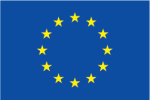[1] Ring J. Predatory journals abuse the flood of publishable material. J Eur Acad Dermatol Venereol 2018; 32: 511–512.
[2] Cobey KD, Lalu MM, Skidmore B, Ahmadzai N, Grudniewicz A, Moher D. What is a predatory journal? A scoping review. F1000Res. 2018;7:1001.
[3] Björk BC. Growth of hybrid open access, 2009-2016. PeerJ. 2017;5:e3878.
[4] Richtig G, Berger M, Lange-Asschenfeldt B, Aberer W, Richtig E. Problems and challenges of predatory journals. J Eur Acad Dermatol Venereol. 2018;32(9):1441–1449.
[5] Beall J. Predatory publishers are corrupting open access. Nature 2012; 489:179
[6] Das, S, Chatterjee, SS (2017) Say no to evil: Predatory journals, what we should know. Asian Journal of Psychiatry 28: 161–162.
[7] Cobey KD, Lalu MM, Skidmore B, Ahmadzai N, Grudniewicz A, Moher D. What is a predatory journal? A scoping review. F1000Res. 2018;7:1001.
[8] Firm action needed on predatory journals. Jocalyn Clark executive editor and assistant professor of medicine BMJ 2015;350:h210
[9] Shamseer L, Moher D, Maduekwe O et al. Potential predatory and legitimate biomedical journals: can you tell the difference? A cross-sectional comparison BMC Med 2017; 15: 28
[10] Manca A, Martinez G, Cugusi L, Dragone D, Mercuro G, Deriu F . Predatory Open Access in Rehabilitation. Arch Phys Med Rehabil 2017; 98:1051–6
[11] Shen C, Bj€ork B-C. ‘Predatory’ open access: a longitudinal study of article volumes and market characteristics. BMC Med 2015; 13: 230.
[12] Habibzadeh F, Simundic AM. Predatory journals and their effects on scientific research community. Biochem Med (Zagreb). 2017;27(2):270–272.
[13] De Groote SL, Shultz M, Smalheiser NR. Examining the Impact of the National Institutes of Health Public Access Policy on the citation rates of journal articles. PLoS ONE 2015; 10: e0139951
[14] Publish and be damned: the damage being created by predatory publishing W. Angus Wallace
[15] Clark AM, Thompson DR. Five (bad) reasons to publish your research in predatory journals. J Adv Nurs 2017; 73: 2499–2501
[16] Firm action needed on predatory journals. Jocalyn Clark executive editor and assistant professor of medicine BMJ 2015;350:h210
[17] Manca A, Martinez G, Cugusi L, Dragone D, Mercuro G, Deriu F . Predatory Open Access in Rehabilitation. Arch Phys Med Rehabil 2017;
[18] Firm action needed on predatory journals. Jocalyn Clark executive editor and assistant professor of medicine BMJ 2015;350:h210
[19] Dadkhah M, Maliszewski T, Teixeira da Silva JA. Hijacked journals, hijacked web-sites, journal phishing, misleading metrics, and predatory publishing: actual and potential threats to academic integrity and publishing ethics. Forensic Sci Med Pathol 2016; 12: 353–362
[20] Clemons M, de Costa e Silva M, Joy AA et al. Predatory invitations from journals: more than just a nuisance? Oncologist 2017; 22: 236–240.
[21] Richtig G, Berger M, Lange-Asschenfeldt B, Aberer W, Richtig E. Problems and challenges of predatory journals. J Eur Acad Dermatol Venereol. 2018;32(9):1441–1449.
[22] Teixeira da Silva, J.A. The Ethical and Academic Implications of the Jeffrey Beall (www.scholarlyoa.com) Blog Shutdown. Sci Eng Ethics (2017).
[23] Teixeira da Silva, J.A. The Ethical and Academic Implications of the Jeffrey Beall (www.scholarlyoa.com) Blog Shutdown. Sci Eng Ethics (2017).
[24] Richtig G, Berger M, Lange-Asschenfeldt B, Aberer W, Richtig E. Problems and challenges of predatory journals. J Eur Acad Dermatol Venereol. 2018;32(9):
[25] Singer A, Murphy L, Hansoti B, Langdorf M. Not all young journals are predatory. West J Emerg Med 2017; 18: 318–323.
[26] Inside Higher Ed. January 18, 2017. Retrieved January 25, 2017z
[27] Davis, Phil (October 4, 2013). “Open Access “Sting” Reveals Deception, Missed Opportunities”. The Scholarly Kitchen
[28] Strielkowski, Wadim & Gryshova, Inna & Maryna, Shcherbata. (2017). PREDATORY PUBLISHING AND BEALL’S LIST: LESSONS FOR THE COUNTRIES ADAPTING NOVEL RESEARCH EVALUATION CRITERIA. Science and Education.
[29] Journal of the American Psychiatric Nurses Association 2017, Vol. 23(4) 239–240 © The Author(s) 2017 Reprints and permissions: sagepub.com/journalsPermissions.nav
[30] Richtig G, Berger M, Lange-Asschenfeldt B, Aberer W, Richtig E. Problems and challenges of predatory journals. J Eur Acad Dermatol Venereol. 2018;32(9):1441–1449.
[31] Shamseer, L., Moher, D., Maduekwe, O., Turner, L., Barbour, V., Burch, R., Clark, J., Galipeau, J., Roberts, J., Shea, B., 2017. Potential predatory and legitimate biomedical journals: can you tell the difference? A cross sectional comparison. BMC Med. 1–14.
[32] Richtig G, Berger M, Lange-Asschenfeldt B, Aberer W, Richtig E. Problems and challenges of predatory journals. J Eur Acad Dermatol Venereol. 2018;32(9):1441–1449.
[33] Justin Wang, Jerry C. Ku, Naif M. Alotaibi, James T. Rutka Retraction of Neurosurgical Publications: A Systematic Review World Neurosurgery, Volume 103, July 2017, Pages 809-814.e1
[34] Strielkowski, Wadim & Gryshova, Inna & Maryna, Shcherbata. (2017). PREDATORY PUBLISHING AND BEALL’S LIST: LESSONS FOR THE COUNTRIES ADAPTING NOVEL RESEARCH EVALUATION CRITERIA. Science and Education. 23. 39-43. 10.24195/2414-4665-2017-8-5.
[35] Habibzadeh F, Simundic AM. Predatory journals and their effects on scientific research community. Biochem Med (Zagreb). 2017;27(2):270–272.
[36] Larivičre V, Haustein S, Mongeon P, Price D de S, Haustein in the digital era. Plos One 2015;10:e0127502.
[37] Stojanovski J, Marusic A.“Predatory” publishers and small scientific communities. Biochem Med (Zagreb) 2017;27:292-9.
[38] Broga M, Mijaljica G, Waligora M, Keis A, Marušić A. Publication and Eastern Europe. Sci Eng Ethics 2014;20:99-109.


The best tool is Think. Check. Submit. which provided authors with a reliable checklist for them to make an informed decision on whether or not the journal or book is a good venue to publish with. http://www.thinkchecksubmit.org
Also, not only open access journals have problems with quality. Subscription journals suffer the same problem.